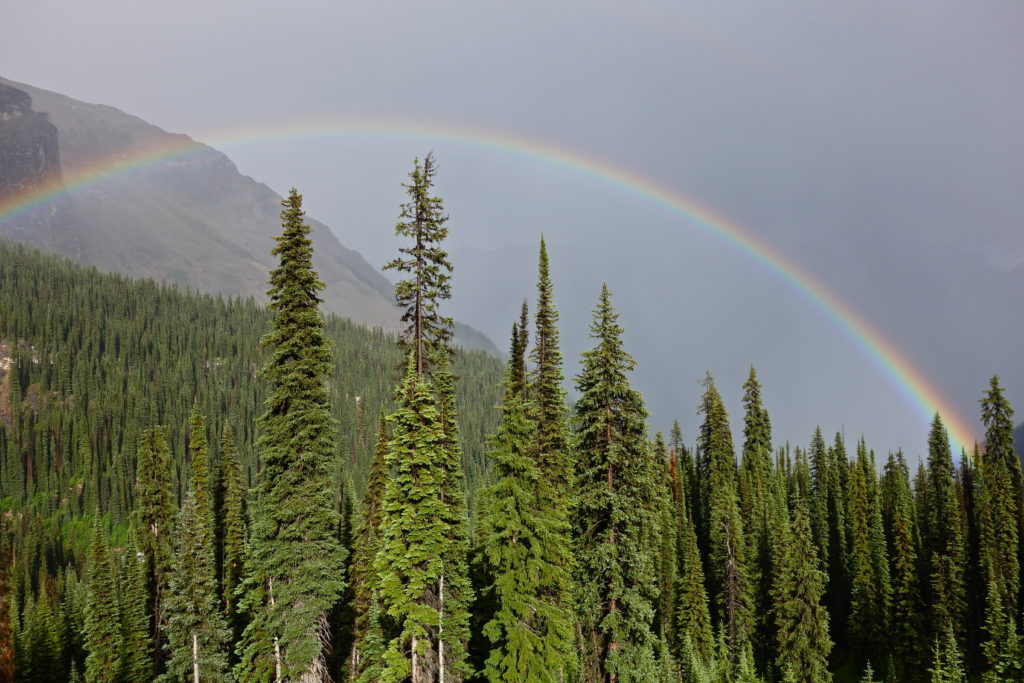Earth’s Day-Night Cycle Is Ideal for Trees
A friend of mine tells me that the latter days of summer always make her depressed. She feels this way because as the days get shorter she has less time for her favorite outdoor activities like hiking, fishing, canoeing, and exploring. I respond by telling her that the end of summer makes me joyous. The lengthening nights mean I have more time for observing the wonders of galaxies, nebulae, stars, planets, and moons.
What unites us is that we both acknowledge we are living on Earth at a time when the day-night cycle is optimal, not just for humans, but for many species of life that are crucial for sustaining our civilization and well–being. As I explain in my book, Improbable Planet,1 if the day-night cycle were slightly less than 24 hours, there would be less even precipitation distributed over Earth’s landmasses, a higher average surface temperature, and greater temperature extremes over the landmasses. On the other hand, if the day-night cycle were slightly more than 24 hours, the difference between day and night temperatures on many landmass regions would be too extreme for large animals that lack access to artificial cooling and heating. Either way, our current human population and level of civilization would not be possible.
Day-Night Cycle and Trees
A team of 12 environmentalists, biologists, and foresters, led by Roman Zweifel, recently published a paper in New Phytologist where they demonstrated how the day-night cycle also impacts the health and growth of trees.2 Zweifel’s team presented the first comprehensive study of the radial growth rate of tree trunks and stems with a temporal resolution (the precision of a measurement with respect to time) of 10 minutes. They conducted their study on seven different tree species in Switzerland over an eight-year period and analyzed a total of 57 million data points. The mean annual temperature and precipitation for the 50 tree sites that were part of the study ranged from 4.5 to 11.9°C (40 to 54°F) and 540 to 1700 mm (21 to 67 inches).
Zweifel’s team discovered that trees gain almost all their growth at night, with peak growth occurring during the hours after midnight. They also found that tree species able to grow significantly during the hours before midnight show the largest annual growth increase.
The team’s observations affirm a theory established a decade ago to explain tree trunk/stem growth.3 This theory connects soil water dynamics, tree hydraulics, and atmospheric water demand to determine the water potential in the cambium where new wood and bark cells form. The cambium is the tissue layer between the xylem and the phloem where plant growth occurs. It takes both carbon and water to facilitate new tree growth. Specifically, Zweifel’s team affirmed that it takes a high hydrostatic or turgor pressure in the cambium to draw up the needed carbon and water for rapid trunk/stem growth. Their observations established that this high hydrostatic pressure in the cambium is greatest at night and it peaks in the hours after midnight.
Optimal Time
Zweifel and his colleagues did not explicitly address—but it’s implied—that we are living at the optimal time in Earth’s history for tree growth. The team’s research findings showed that it takes time during the night for the hydrostatic pressure in the cambium to build up to where the maximum rate of trunk/stem growth can be initiated and sustained. These findings imply that the longer the day-night cycle, the greater the tree growth.
Given equivalent nutrient and water availability, a rotation rate of 24 hours per day is optimal for tree growth. We are living at a time when Earth’s rotation equals 24 hours per day.
The results come with one important caveat. Too long of a day-night cycle implies colder temperatures after midnight and warmer temperatures after noontime. There is a limit to how great a day-to-night temperature difference trees can tolerate before it impacts their growth rate. Deserts, for example, experience greater day-to-night temperature differences than do wetter, more humid land regions. It is well observed that trees in deserts grow at a much slower rate than trees in wetter regions, even where the deep soil water availability is comparable.

Day-Night Cycle Variation and Human Flourishing
Earth’s rotation rate has not always been 24 hours per day and will not be so in the future. When the planet Theia collided/merged with the proto-Earth to make a larger Earth and form the Moon, Earth’s rotation rate was less than 3 hours per day.4 Since then, tidal forces exerted by the Moon and Sun on Earth have gradually slowed down Earth’s rotation rate.
About 375 million years ago, Earth’s rotation had slowed down enough for significant tree growth to be possible. In less than 100 million years from now, the Earth will be rotating so slowly and the Sun shining so brightly that trees will no longer be able to exist. Thanks to many intricate designs in the Sun, Moon, Earth, and trees and to the timing of our own creation, we are able to reap the maximum possible benefits from trees during the human era.
Check out more from Reasons to Believe @Reasons.org
Endnotes
- Hugh Ross, Improbable Planet: How Earth Became Humanity’s Home (Grand Rapids, MI: Baker Books, 2016): 58, 62–77.
- Roman Zweifel et al., “Why Trees Grow at Night,” New Phytologist (published online ahead of print June 12, 2021): doi:10.1111/nph.17552.
- David R. Woodruff and Frederick C. Meinzer, “Size-Dependent Changes in Biophysical Control of Tree Growth: The Role of Turgor,” in Size- and Age- Related Changes in Tree Structure and Function, eds. Frederick C. Meinzer, Barbara Lachenbruch, and Todd E. Dawson (Dordrecht, Netherlands: Springer, 2011): 363–384, doi:10.1007/978-94-007-1242-3_14.
- Matija Ćuk and Sarah T. Stewart, “Making the Moon from a Fast-Spinning Earth: A Giant Impact Followed by Resonant Despinning,” Science 338, no. 6110 (November 23, 2012): 1047–1052, doi:10.1126/science.1225542.





